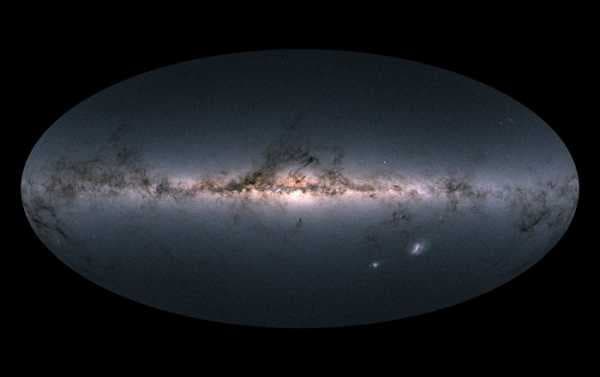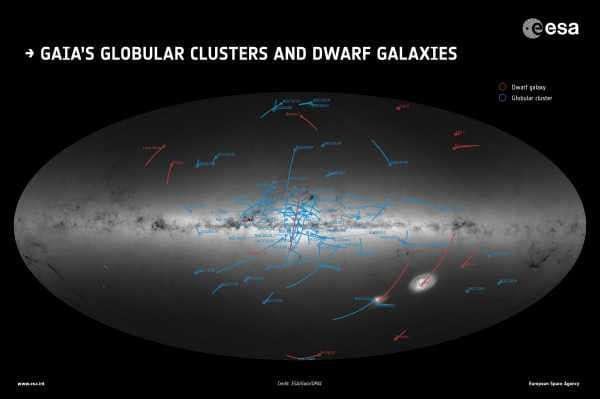
The European Space Agency (ESA) released the largest-ever map of the stars on Wednesday, made from data collected by its Gaia satellite.
The latest data release, the second unveiled by the ESA since the satellite was launched in 2013, offers details on the position and brightness of some 1.7 million stars in the Milky Way as well as the color, distance and motion of 1.3 million of them. The first batch of information, which helped to create ESA’s first map, was released in September 2016. The previous map only gave the estimated positions of 1.1 million stars.
The second batch also features radial velocities, dust amounts and surface temperatures of stars and a catalog of more than 14,000 objects in the solar system, including asteroids.
”The dataset is very rich and we believe it will revolutionize astronomy and our understanding of the Milky Way,” Uwe Lammers, Gaia’s scientific operations manager, told AFP. “This catalogue is the most precise, most complete catalogue that has ever been produced.”
“It allows studies which have not been possible before,” Lammers added.
Speaking to Gizmodo, Lammers explained that the second data release expands the first map’s outward from a radius of 500 light-years to some 8,000 light-years.
With Gaia being able to track the movement of stars, astronomers will eventually be able to identify their age and composition and examine just how much they’ve changed over the lifetime of the Milky Way.

An all sky view of 75 globular clusters (blue) and 12 nearby dwarf galaxies (red) as viewed by ESA’s Gaia satellite using information from the mission’s second data release.
“The observations collected by Gaia are redefining the foundations of astronomy,” Günther Hasinger, ESA’s director of science, said in a Wednesday statement. “Gaia is an ambitious mission that relies on a huge human collaboration to make sense of a large volume of highly complex data. It demonstrates the need for long-term projects to guarantee progress in space science and technology and to implement even more daring scientific missions of the coming decades.”
Anthony Brown, the chair of the Gaia Data Processing and Analysis Consortium Executive, stressed in a statement released by ESA that the second data release “represents a huge leap forward.”
ESA is expected to release an even more precise map in 2020. According to Gizmodo, that map will either provide spectral data or specific wavelengths of light that stars release.
Sourse: sputniknews.com






